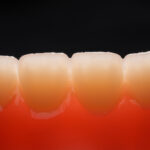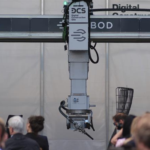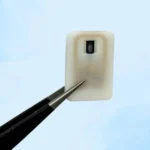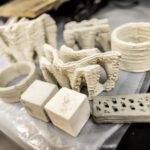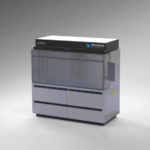Researchers at the University of Minnesota Twin Cities have developed an innovative adaptive 3D printing system capable of identifying and positioning randomly distributed organisms. This autonomous technology promises to significantly improve processes in cryopreservation, cybernetics, bioimaging, and the development of devices that incorporate living organisms by saving both time and resources.
Advancing Bio-Integration with Autonomous Technology
This adaptive 3D printing system marks a significant advancement in the precise handling of living organisms. The system can autonomously track, collect, and accurately position organisms, whether they are stationary or in motion. By utilizing real-time visual and spatial data, the technology adapts to ensure exact placement, which is essential for applications that require integrating organisms with materials or devices. The research is published in *Advanced Science*, a peer-reviewed scientific journal, highlighting the system’s potential impact across various fields. Additionally, the researchers have filed a patent for this innovative technology, further emphasizing its novelty and potential to transform current practices.

Guebum Han, the lead author of the study and a former postdoctoral researcher in mechanical engineering at the University of Minnesota, explained the functionality of the system: “The printer itself can act like a human would, with the printer acting as hands, the machine vision system as eyes, and the computer as the brain. The printer can adapt in real-time to moving or still organisms and assemble them in a certain array or pattern.”
Traditionally, such tasks have been performed manually, requiring extensive training and often resulting in inconsistencies. The new system reduces the time needed for these processes and enhances the consistency of results, which could be particularly beneficial in fields like cryopreservation, where the accurate handling of organisms is critical. Moreover, the technology can sort live organisms from deceased ones, place organisms on curved surfaces, and integrate them with materials and devices in customizable shapes. It also has the potential to create complex arrangements, such as superorganism hierarchies, which are organized structures seen in insect colonies like ants and bees.
Applications and Future Potential
This technology could change several biological and engineering fields by increasing the efficiency of cryopreservation, enabling the sorting of live organisms from deceased ones, and facilitating the integration of organisms on various surfaces, including curved ones. The system also holds potential for creating complex organism arrangements, such as superorganism hierarchies found in insect colonies.
For instance, the research team demonstrated that this system could improve cryopreservation methods for zebrafish embryos, completing the process 12 times faster than traditional manual methods. Additionally, the system’s adaptive capabilities were showcased in experiments where it successfully tracked, picked up, and placed randomly moving beetles, integrating them with functional devices.
Looking ahead, the researchers aim to combine this technology with robotics, potentially making it portable for field research. This advancement could allow scientists to collect and process organisms in environments that are currently difficult to access. The work also has broader implications for advancing autonomous biomanufacturing by enabling the evaluation and assembly of living organisms in new and innovative ways.
Support and Collaboration
This innovative work was a collaborative effort involving several members of the University of Minnesota Department of Mechanical Engineering, including graduate research assistants Kieran Smith and Daniel Wai Hou Ng, Assistant Professor JiYong Lee, Professor John Bischof, Professor Michael McAlpine, and former postdoctoral researchers Kanav Khosla and Xia Ouyang. The project also received support from the Engineering Research Center (ERC) for Advanced Technologies for the Preservation of Biological Systems (ATP-Bio). Funding for the research was provided by the National Science Foundation, the National Institutes of Health, and Regenerative Medicine Minnesota.
Next Steps in Biotech Innovation
The adaptive 3D printing system developed by the University of Minnesota represents a significant advancement in the handling and assembly of living organisms. By automating the process and enhancing precision, this technology could have far-reaching implications for fields ranging from cryopreservation to autonomous biomanufacturing. The continued development and integration of this system with robotics could further expand its applications, making it a valuable tool for researchers in diverse scientific disciplines.
Source: cse.umn.edu


